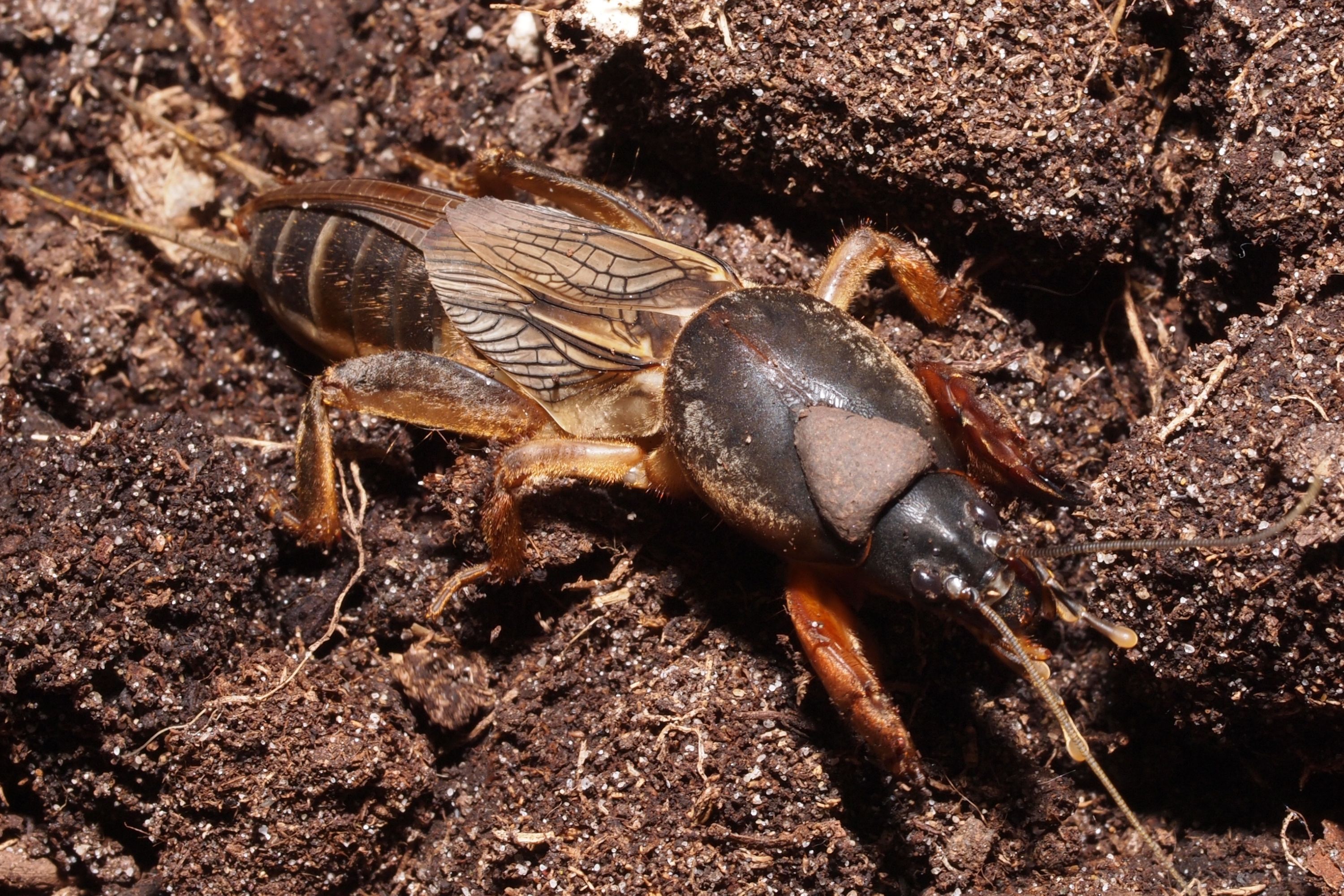European mole cricket
(Gryllotalpa gryllotalpa)

Description
Gryllotalpa gryllotalpa, commonly known as the European mole cricket, is widespread in Europe and has been introduced to the eastern United States. The scientific name is derived from the Latin 'gryllus' meaning a cricket and 'talpa', a mole, and is descriptive because of the fine dense fur by which it is covered and its subterranean habits, and because of the mole-like forelegs adapted for digging, a good example of convergent evolution. The body length is about 50 millimetres in males and 70 millimetres in females. The cricket is dark brown with a silky shimmer and yellowish underside and is covered with fine velvety hairs. The forelegs are powerful and modified for digging. The elytra are half the length of the abdomen and the wings are transparent and netted with veins. They are folded into pleats and seldom used as the cricket normally remains below the ground. The males can be distinguished from the females by the open vein area in the forewing known as the 'harp' while the females lack the external ovipositor that is possessed by other crickets. This mole cricket occurs throughout much of the Western Palaearctic, but is replaced by similar species in the south and east, and becomes rare or absent towards the north. Favoured habitats include damp rich soils, flood plains, reservoir edges, irrigated and well-fertilized fields and vegetable gardens. The family Gryllotalpidae includes several similar species. The female cricket lays 100 to 350 eggs in an underground chamber in the spring. They hatch ten to twenty days later and she guards them for another two to three weeks. The nymphs moult six times and take from one to three years to reach maturity. Adults and nymphs live underground throughout the year in extensive tunnel systems that may reach a depth of over a metre in the winter. They are omnivorous, feeding on roots, tubers and rhizomes and a range of soil invertebrates. They often leave neat circular holes in tuberous plants. The males occasionally produce a soft, 'churring' song from within a specially constructed chamber in the burrow system. This acts to amplify the song which is believed to be used for attracting females. The sounds are typically produced on warm mild evenings in early spring and they are similar to the song of the nightjar, Caprimulgus europeaeus. Natural enemies include rooks, starlings and other birds, shrews, moles, ants, ground beetles, nematodes and mites.
Taxonomic tree:







